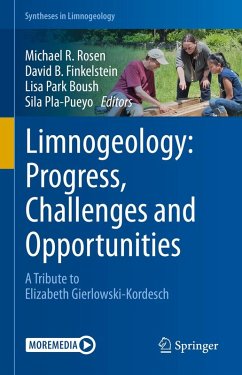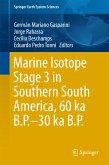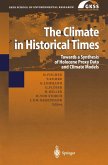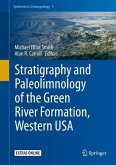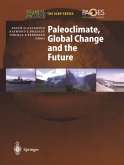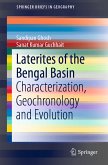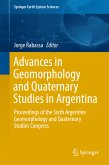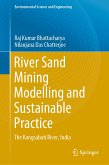Limnogeology: Progress, Challenges and Opportunities (eBook, PDF)
A Tribute to Elizabeth Gierlowski-Kordesch
Redaktion: Rosen, Michael R.; Pla-Pueyo, Sila; Park Boush, Lisa; Finkelstein, David B.


Alle Infos zum eBook verschenken

Limnogeology: Progress, Challenges and Opportunities (eBook, PDF)
A Tribute to Elizabeth Gierlowski-Kordesch
Redaktion: Rosen, Michael R.; Pla-Pueyo, Sila; Park Boush, Lisa; Finkelstein, David B.
- Format: PDF
- Merkliste
- Auf die Merkliste
- Bewerten Bewerten
- Teilen
- Produkt teilen
- Produkterinnerung
- Produkterinnerung

Hier können Sie sich einloggen

Bitte loggen Sie sich zunächst in Ihr Kundenkonto ein oder registrieren Sie sich bei bücher.de, um das eBook-Abo tolino select nutzen zu können.
This book honors the career of Professor Elizabeth Gierlowski-Kordesch who was a pioneer and leader in the field of limnogeology since the 1980s. Her work was instrumental in guiding students and professionals in the field until her untimely death in 2016. This collection of chapters was written by her colleagues and students and recognize the important role that Professor Gierlowski-Kordesch had in advancing the field of limnogeology. The chapters show the breadth of her reach as these have been contributed from virtually every continent. This book will be a primary reference for scientists,…mehr
- Geräte: PC
- ohne Kopierschutz
- eBook Hilfe
- Größe: 42.31MB
![Marine Isotope Stage 3 in Southern South America, 60 KA B.P.-30 KA B.P. (eBook, PDF) Marine Isotope Stage 3 in Southern South America, 60 KA B.P.-30 KA B.P. (eBook, PDF)]() Marine Isotope Stage 3 in Southern South America, 60 KA B.P.-30 KA B.P. (eBook, PDF)73,95 €
Marine Isotope Stage 3 in Southern South America, 60 KA B.P.-30 KA B.P. (eBook, PDF)73,95 €![The Climate in Historical Times (eBook, PDF) The Climate in Historical Times (eBook, PDF)]() The Climate in Historical Times (eBook, PDF)161,95 €
The Climate in Historical Times (eBook, PDF)161,95 €![Stratigraphy and Paleolimnology of the Green River Formation, Western USA (eBook, PDF) Stratigraphy and Paleolimnology of the Green River Formation, Western USA (eBook, PDF)]() Stratigraphy and Paleolimnology of the Green River Formation, Western USA (eBook, PDF)73,95 €
Stratigraphy and Paleolimnology of the Green River Formation, Western USA (eBook, PDF)73,95 €![Paleoclimate, Global Change and the Future (eBook, PDF) Paleoclimate, Global Change and the Future (eBook, PDF)]() Paleoclimate, Global Change and the Future (eBook, PDF)40,95 €
Paleoclimate, Global Change and the Future (eBook, PDF)40,95 €![Laterites of the Bengal Basin (eBook, PDF) Laterites of the Bengal Basin (eBook, PDF)]() Sandipan GhoshLaterites of the Bengal Basin (eBook, PDF)40,95 €
Sandipan GhoshLaterites of the Bengal Basin (eBook, PDF)40,95 €![Advances in Geomorphology and Quaternary Studies in Argentina (eBook, PDF) Advances in Geomorphology and Quaternary Studies in Argentina (eBook, PDF)]() Advances in Geomorphology and Quaternary Studies in Argentina (eBook, PDF)113,95 €
Advances in Geomorphology and Quaternary Studies in Argentina (eBook, PDF)113,95 €![River Sand Mining Modelling and Sustainable Practice (eBook, PDF) River Sand Mining Modelling and Sustainable Practice (eBook, PDF)]() Raj Kumar BhattacharyaRiver Sand Mining Modelling and Sustainable Practice (eBook, PDF)73,95 €
Raj Kumar BhattacharyaRiver Sand Mining Modelling and Sustainable Practice (eBook, PDF)73,95 €-
-
-
Dieser Download kann aus rechtlichen Gründen nur mit Rechnungsadresse in A, B, BG, CY, CZ, D, DK, EW, E, FIN, F, GR, HR, H, IRL, I, LT, L, LR, M, NL, PL, P, R, S, SLO, SK ausgeliefert werden.
- Produktdetails
- Verlag: Springer International Publishing
- Seitenzahl: 592
- Erscheinungstermin: 24. April 2021
- Englisch
- ISBN-13: 9783030665760
- Artikelnr.: 61629499
- Verlag: Springer International Publishing
- Seitenzahl: 592
- Erscheinungstermin: 24. April 2021
- Englisch
- ISBN-13: 9783030665760
- Artikelnr.: 61629499
- Herstellerkennzeichnung Die Herstellerinformationen sind derzeit nicht verfügbar.
